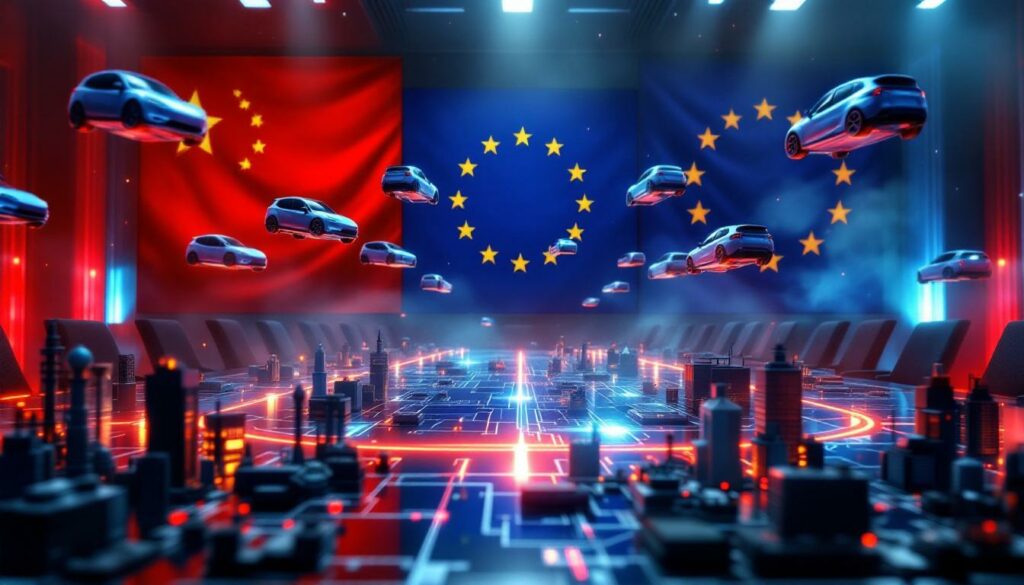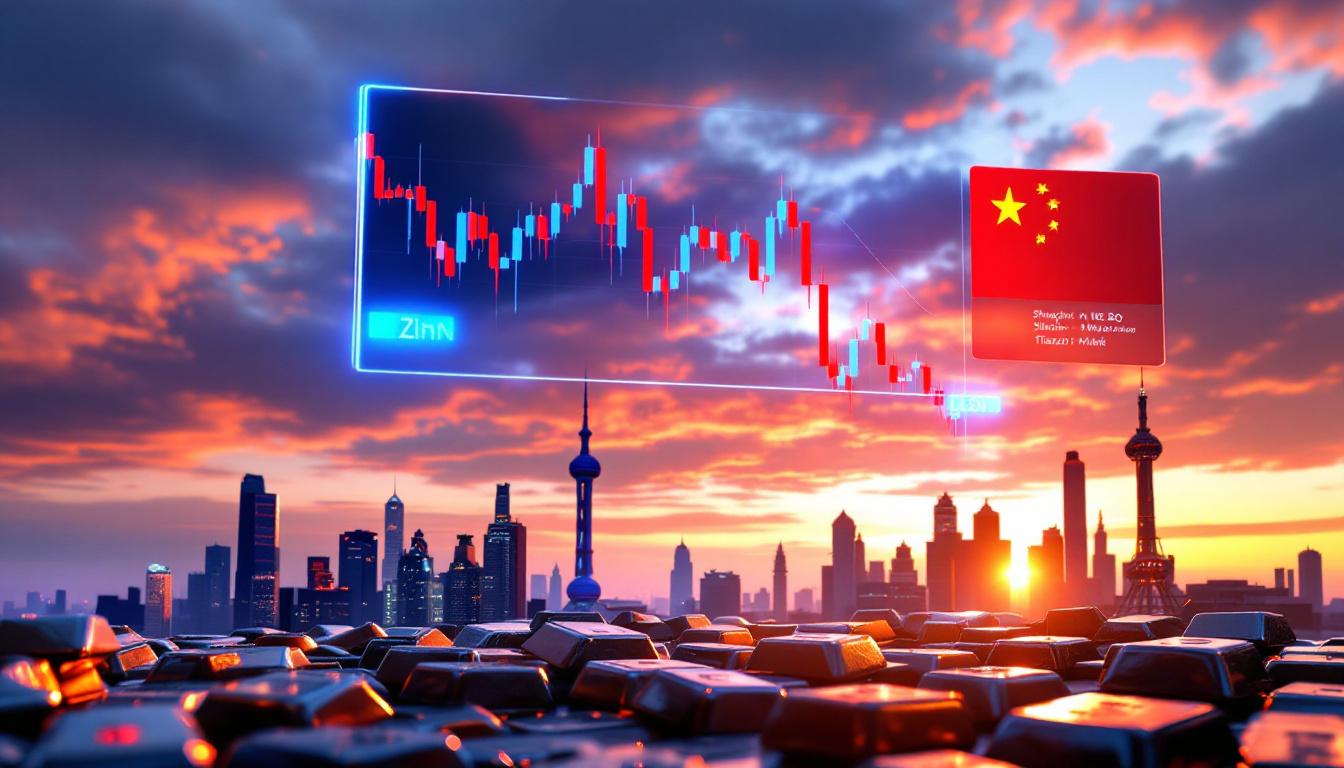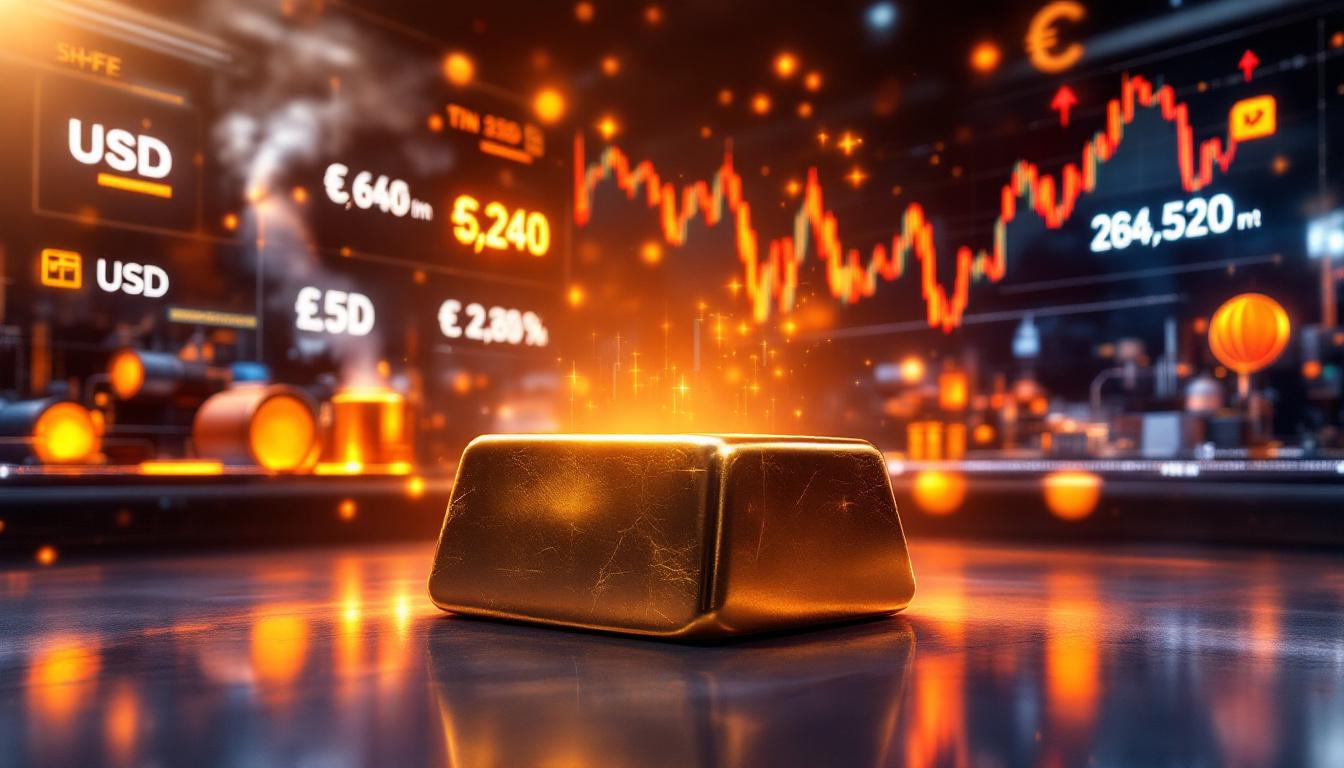Navigating Economic Tensions: China-EU Trade Relations at a Crossroads
In a high-stakes diplomatic exchange, Chinese Commerce Minister Wang Wentao and EU Trade Commissioner Maros Sefcovic conducted a video conference on June 20, 2025, marking the latest effort to address escalating trade tensions. This dialogue comes just days after European Commission President Ursula von der Leyen delivered pointed criticism of Chinese economic practices at the G7 summit in Canada, setting a contentious tone ahead of the landmark 50th anniversary of China-EU diplomatic relations scheduled for July 2025.
The timing of these exchanges reflects the increasingly complex nature of one of the world's most significant economic partnerships, with both sides navigating a delicate balance between cooperation and competition.
"Despite disagreements, both sides emphasized the importance of maintaining open channels of communication," noted the Chinese Ministry of Commerce in its official statement following the Wang-Sefcovic call, highlighting the paradoxical nature of the relationship – deep economic interdependence coupled with growing strategic rivalry.
The Current State of China-EU Economic Tensions
The recent diplomatic activities highlight several flashpoints that have transformed China-EU economic relations from a predominantly cooperative partnership to an increasingly competitive one. At the heart of these tensions lies the EU's new tariff regime on Chinese electric vehicles, implemented as a response to what European officials characterize as "state-subsidized overcapacity."
Von der Leyen's remarks at the G7 summit were particularly direct, accusing China of deploying "massive subsidies with the aim to dominate manufacturing and supply chains" – a strategy she described as "distortion with intent." This language signals a significant hardening in the EU's stance toward Chinese industrial policies.
Beyond electric vehicles, European concerns encompass a broader range of issues:
- Market access asymmetry for European companies in China
- Strategic dependencies in critical supply chains, particularly rare earth materials
- Chinese manufacturing overcapacity in sectors ranging from steel to solar panels
- Export control restrictions affecting technological exchanges
- State subsidies creating uneven competitive landscapes
The Chinese Ministry of Commerce has consistently rejected these characterizations, framing its industrial policies as legitimate economic development strategies and emphasizing the need for "working together to lay the groundwork for key economic and trade items" rather than confrontation.
Chinese Subsidies: Economic Development Tool or Market Distortion?
The fundamental disagreement over Chinese industrial subsidies represents perhaps the most significant conceptual divide between Beijing and Brussels. European officials, led by von der Leyen, have explicitly framed Chinese subsidies as a deliberate strategy to dominate global manufacturing and supply chains.
"What we're witnessing isn't merely market competition, but a systematic effort to create industrial dominance through non-market means," stated a European Commission briefing document circulated prior to the Wang-Sefcovic call. This perspective views Chinese subsidies not as standard economic development tools but as instruments of strategic competition.
Chinese officials counter that these subsidies represent legitimate policy tools for economic development that have lifted hundreds of millions out of poverty and created a middle-class consumer market beneficial to European exporters of luxury goods, machinery, and services.
"Different economic governance models should not become a source of conflict," Wang emphasized during the video conference, according to the Ministry of Commerce readout. "China's development creates opportunities, not threats."
This fundamental disagreement reflects deeper differences in economic philosophy:
- The European model emphasizes market-based competition with limited state intervention
- The Chinese approach views state guidance of industrial development as essential to economic advancement
- Europeans focus on "level playing field" concerns while Chinese officials emphasize development outcomes
- The EU seeks reciprocity while China points to its status as a developing economy
Despite these philosophical differences, both sides acknowledge the necessity of maintaining dialogue. The Wang-Sefcovic call resulted in an agreement to "work together to lay the groundwork for key economic and trade items" ahead of the July summit – a modest but significant commitment to continued engagement.
The Electric Vehicle Battleground: Tariffs and Technology Competition
The EU's tariffs impact on markets represent the most visible manifestation of the broader economic tensions. While the exact structure and implementation timeline of these tariffs weren't specified in official communications, they follow the European Commission's investigation into what it termed "unfair subsidization" of Chinese EV manufacturers.
These tariffs reflect broader European concerns about technological leadership in the green transition. Electric vehicles represent not just a significant manufacturing sector but a strategic technology central to Europe's climate goals and industrial future.
"The EV sector exemplifies our broader concerns," von der Leyen noted at the G7. "Massive subsidies create overcapacity, which then floods global markets at artificially low prices, undermining fair competition."
The Chinese response to these tariffs has been measured but firm. The Ministry of Commerce expressed "serious concern" and emphasized that "protectionist measures benefit neither side." Chinese officials have consistently framed the tariffs as violations of WTO principles rather than legitimate trade defense measures.
For European automakers, the situation creates complex dilemmas:
- Many have established joint ventures or manufacturing facilities in China
- Supply chains for critical components like batteries remain heavily dependent on Chinese manufacturers
- Competitive pressures force technological cooperation even amid political tensions
- Consumers benefit from price competition but industries fear market displacement
The EV dispute exemplifies how climate technology has become a central battleground in economic competition, with both sides claiming to support green transition while protecting their industrial interests.
Supply Chain Vulnerabilities: The Rare Earth Challenge
Von der Leyen's accusation that China is "weaponising its dominant position in the rare earth supply chain to undermine competitors in key industries" highlights another dimension of the tensions – strategic dependencies in critical minerals energy transition.
Rare earth elements, despite their name, are not particularly rare geologically but are difficult and environmentally challenging to extract and process. China's dominance in this sector reflects decades of strategic investment while Western economies largely abandoned domestic production due to environmental concerns and economic factors.
According to the U.S. Geological Survey, China controls approximately 60% of global rare earth mining and over 80% of processing capacity – creating a strategic vulnerability for European manufacturers of everything from wind turbines to electric motors and defense systems.
The European response has been multi-faceted:
- The 2023 Critical Raw Materials Act set targets to reduce import reliance below 65% by 2030
- Strategic partnerships with resource-rich countries like Australia and Canada
- Research into recycling and alternative materials to reduce dependency
- Reopening domestic mining operations despite environmental challenges
Chinese officials reject the "weaponization" characterization, noting that China continues to be a reliable supplier of rare earths to global markets while maintaining sovereign rights to manage its natural resources.
The rare earth issue illustrates a broader challenge: the tension between economic efficiency (which drove global supply chain concentration) and security considerations (which now push toward diversification and redundancy). This tension defines much of the current China-EU economic relationship.
The 50-Year Anniversary Summit: Symbolic Milestone or New Beginning?
The upcoming July 2025 summit marking 50 years of China-EU diplomatic relations offers both symbolic importance and practical opportunity. The milestone provides historical perspective on a relationship that has evolved from marginal significance to central importance for both parties.
Since formal diplomatic relations were established in 1975, bilateral trade has grown approximately 250-fold, from roughly €2.3 billion to €586 billion (as of 2023), according to Eurostat data. This remarkable growth underscores both the success of the relationship and the stakes involved in its current tensions.
The summit agenda will likely address several critical areas:
- Potential compromise frameworks on EV tariffs and other trade irritants
- Market access reciprocity mechanisms and investment protections
- Supply chain security and diversification strategies
- Climate cooperation amid competitive tensions
- Dialog structures for addressing industrial policy differences
"Both sides recognize the importance of the anniversary and are working to ensure substantive outcomes," noted a European diplomatic source familiar with the preparations. "The goal isn't just commemorating the past but charting a sustainable path forward."
Chinese officials have similarly emphasized the summit's importance, with Wang stating during the video conference that "fifty years of diplomatic relations deserve celebration through practical cooperation."
The symbolic timing provides both incentive for breakthrough and risk of heightened disappointment if results fall short – making the preparatory work between Wang and Sefcovic particularly significant.
Global Dynamics: The U.S. Factor and Multilateral Implications
The China-EU relationship doesn't exist in isolation but is profoundly shaped by broader global dynamics – particularly the role of the United States. Former President Trump's attendance at the G7 summit where von der Leyen delivered her critique of Chinese economic practices highlights the triangular nature of these relationships.
Trump tariffs' global impact creates additional pressure on European policymakers, who must navigate between Chinese economic gravitational pull and transatlantic political alignment. This triangular dynamic introduces additional complexity into already challenging bilateral discussions.
The multilateral trading system itself faces challenges from these tensions. Both China and the EU profess commitment to WTO principles while accusing each other of violations – the EU pointing to Chinese subsidies and market restrictions, China highlighting European tariffs and investment screening mechanisms.
Several factors complicate the multilateral landscape:
- WTO reform discussions remain stalled amid great power disagreements
- Regional trade agreements create overlapping and sometimes contradictory commitments
- Security considerations increasingly override purely economic calculations
- Technological competition drives regulatory divergence rather than harmonization
These multilateral dimensions mean that China-EU relations have significance beyond their bilateral importance, potentially shaping the future of global economy uncertainty itself.
Pathways Forward: Economic Pragmatism Amid Strategic Competition
Despite the tensions, the economic interdependence between China and the EU creates powerful incentives for finding workable compromises. With bilateral trade reaching €586 billion in 2023 and the EU representing China's largest trading partner (accounting for approximately 19% of exports), both sides face substantial costs from prolonged conflict.
Several potential paths forward emerge from current discussions:
- Sector-specific agreements that address particular friction points while avoiding broader ideological debates
- Structured dialogue mechanisms with concrete benchmarks for measuring progress
- Reciprocity frameworks that acknowledge different development stages while ensuring fair access
- Supply chain coordination that balances security concerns with economic efficiency
"Economic pragmatism must prevail," Wang emphasized during the video conference, according to Ministry statements. "Our economies are too integrated to pursue decoupling, and our challenges too significant to address in isolation."
European officials, while more cautious in their public statements, similarly acknowledge the practical necessities of engagement. "We're clear-eyed about our differences, but equally clear about our interdependence," noted a Commission spokesperson following the Wang-Sefcovic call.
The costs of decoupling would be substantial for both sides:
- European manufacturers rely on Chinese components and assembly capacity
- Chinese exporters depend on European markets for high-value goods
- Global challenges like climate change require coordinated response
- Innovation increasingly depends on global knowledge flows and talent exchanges
"The relationship between China and Europe is too important to fail, yet too complex to succeed without deliberate effort. The challenge isn't choosing between competition and cooperation, but managing both simultaneously." – Joint statement from EU-China Business Association, June 2025
Managing Economic Competition: Balancing Values and Interests
The fundamental challenge for both Chinese and European policymakers lies in balancing values-based positions with practical economic interests. For Europe, this means reconciling market principles and fair competition with the reality of strategic dependencies and global economic integration. For China, it means maintaining development priorities while addressing legitimate concerns about market access and industrial policy impacts.
Several principles may guide this balancing act:
- Targeted reciprocity rather than broad decoupling
- Sector-specific approaches that acknowledge different competitive dynamics
- Transparent rules rather than unpredictable interventions
- Managed interdependence rather than either full integration or separation
The Wang-Sefcovic call, despite occurring amid heightened tensions, demonstrated that communication channels remain open. Both sides emphasized their commitment to "working together to lay the groundwork" for the upcoming summit – a modest but significant commitment given the alternative of diplomatic disengagement.
As one European diplomat noted privately: "We've moved beyond naivety but haven't embraced hostility. The relationship will be more complicated, more competitive, but ultimately still cooperative where interests align."
This pragmatic approach acknowledges both the tensions and the stakes – a relationship too significant to abandon, too complex to simplify, and too consequential to mismanage. The US‑China trade war impacts have also demonstrated the high costs of economic confrontation, providing additional incentive for both sides to find workable compromises despite their differences, as reported by Reuters.
FAQ: Understanding China-EU Trade Relations
What triggered the current tensions between China and the EU?
The tensions stem from multiple factors converging in recent years: the EU's implementation of tariffs on Chinese electric vehicles, growing concerns about Chinese industrial subsidies creating market distortions, and strategic anxieties about manufacturing overcapacity flooding European markets. These economic frictions reflect deeper differences in economic governance models and strategic competition in advanced technologies.
How significant is the China-EU trade relationship in global terms?
The China-EU trade relationship represents one of the world's largest bilateral economic partnerships, with approximately €586 billion in annual trade flows as of 2023. China remains one of the EU's largest trading partners, while the EU represents China's single largest export market, accounting for roughly 19% of Chinese exports. This massive economic integration makes the relationship strategically important for both sides.
What are the key issues to be addressed at the July 2025 summit?
The July summit, coinciding with the 50th anniversary of diplomatic relations, will likely address electric vehicle tariffs, market access restrictions, industrial subsidies, export controls, and supply chain dependencies. The meeting also holds symbolic importance as both sides seek to demonstrate that cooperation remains possible despite growing competitive tensions.
How might these trade tensions affect global supply chains?
Continued tensions could accelerate supply chain diversification efforts, particularly in strategic sectors like rare earth materials, electric vehicle components, and advanced manufacturing. Companies may face increased compliance costs and uncertainty as they navigate evolving trade policies between these major economic blocs, potentially leading to more regionalized supply chain structures with greater redundancy but higher costs.
What distinguishes the European and Chinese economic governance models?
The European model emphasizes market-based competition with limited state intervention, transparent regulations, and a focus on creating level competitive conditions. The Chinese approach features more significant state guidance of industrial development, strategic sector prioritization, and development-oriented policies. These differences in economic philosophy underlie many of the current tensions, according to analysis from China Briefing.
Can the EU reduce its dependency on Chinese rare earth materials?
While complete independence is unlikely in the near term, the EU's Critical Raw Materials Act targets reducing dependency to below 65% by 2030 through a combination of strategies: developing alternative suppliers in friendly nations, reopening European mining operations, investing in recycling technologies, and researching substitute materials. However, China's established processing infrastructure and economies of scale present significant challenges to rapid diversification.
Want to Discover the Next Major Mineral Investment Opportunity?
Stay ahead of the market with Discovery Alert's proprietary Discovery IQ model, which instantly notifies investors of significant ASX mineral discoveries and transforms complex data into actionable insights. Explore why historic discoveries can generate substantial returns by visiting the Discovery Alert discoveries page and position yourself for investment success.




